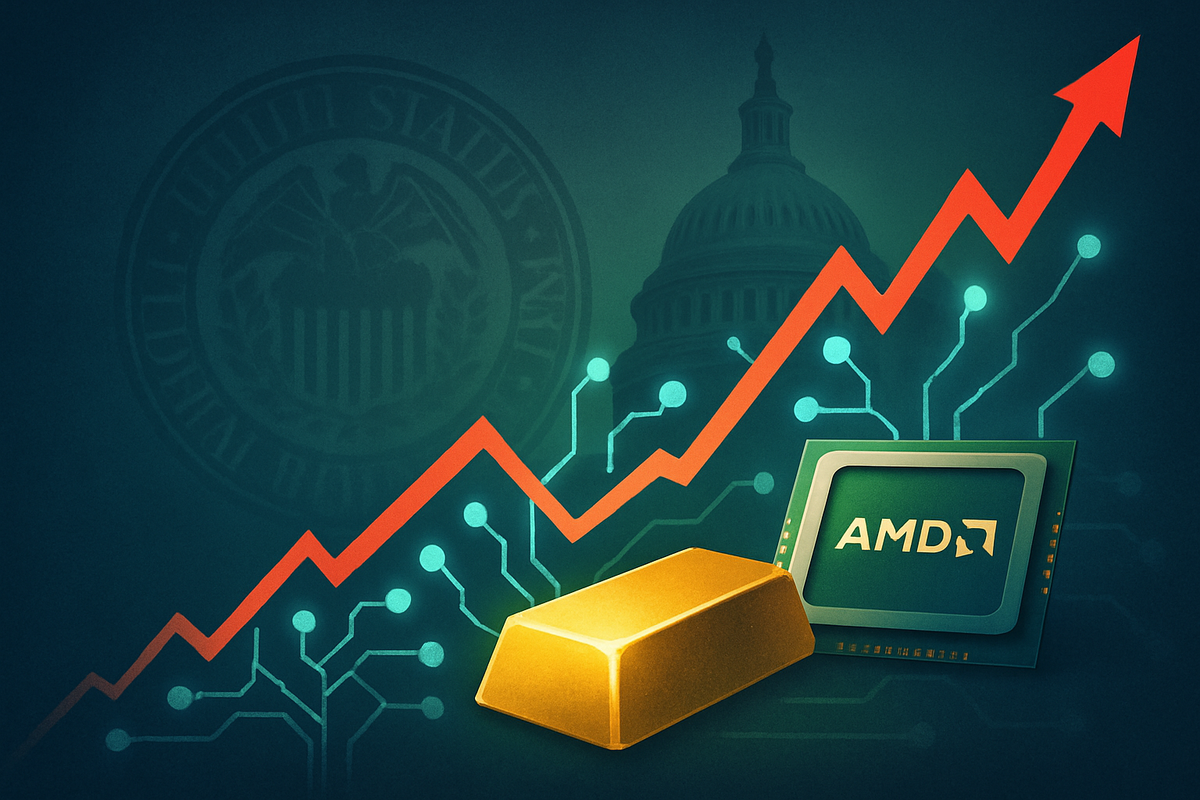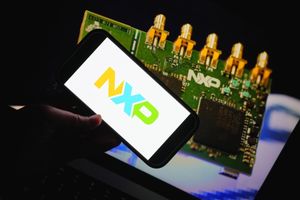
The financial markets are currently navigating a complex landscape marked by both exhilarating triumphs and underlying anxieties. As of October 6, 2025, the S&P 500 is riding a wave of optimism, having recently notched significant winning streaks and fresh record highs, largely propelled by the relentless surge in artificial intelligence. This bullish sentiment is further amplified by a monumental partnership for chipmaker Advanced Micro Devices (NASDAQ: AMD), solidifying its position in the burgeoning AI arena. Concurrently, gold has shattered previous records, reflecting a global flight to safety amidst persistent economic uncertainties and geopolitical tensions. Yet, beneath this veneer of market strength, the specter of a U.S. government shutdown looms, threatening to inject instability into an otherwise robust, albeit concentrated, market rally.
These diverse events paint a picture of a market grappling with rapid technological evolution, shifting global power dynamics, and domestic political gridlock. While the S&P 500's resilience suggests investors are largely "looking through the noise," the confluence of these factors creates a volatile environment where opportunities and risks are amplified, demanding keen attention from investors and policymakers alike.
A Deep Dive into Market Movers: S&P 500's Streak, AMD's Leap, Gold's Haven, and Government's Shadow
The S&P 500 has demonstrated remarkable resilience and upward momentum throughout 2025. The index concluded a significant 9-day winning streak on May 2, 2025, marking its longest such rally in over two decades, since 2004. This period of sustained gains was attributed to a robust jobs report, renewed optimism around potential trade discussions with China, and a generally strong corporate earnings season. More recently, as of October 3, 2025, the S&P 500 was in the midst of a six-day winning streak, achieving three consecutive record highs within that week, and marking its 31st record close of the year. This impressive performance has been largely fueled by fervent optimism surrounding artificial intelligence infrastructure investments and the robust performance of mega-cap technology stocks. Expectations of further interest rate cuts by the Federal Reserve have also bolstered investor confidence, allowing the market to largely overlook headwinds such as weak consumer confidence and the ongoing U.S. government shutdown.
Advanced Micro Devices (NASDAQ: AMD) has emerged as a central figure in the AI narrative, demonstrating dynamic performance throughout 2024 and 2025. The company's strategic focus on the AI and data center markets, backed by significant product launches, has been a primary driver. In 2024, AMD introduced its Zen 5 microarchitecture, powering the Ryzen 9000 series desktop processors and Ryzen AI 300 series for laptops, alongside the ramp-up of its MI300 AI accelerators. This momentum continued into 2025 with the unveiling of new Ryzen 9900X3D and 9950X3D Series desktop processors, the more advanced AMD Instinct MI350 series accelerators, and the fifth-generation EPYC Turin processors for servers. The most significant development, however, occurred today, October 6, 2025, with the announcement of a landmark multi-year partnership with OpenAI. This deal commits OpenAI to deploy 6 gigawatts of AMD's Instinct GPUs, starting with the MI450 in late 2026, and is valued at tens of billions annually, directly challenging NVIDIA's (NASDAQ: NVDA) market leadership. This news sent AMD's stock surging by over 30% in early trading, adding more than $100 billion to its market capitalization.
Meanwhile, gold has solidified its traditional role as a safe-haven asset, soaring to unprecedented levels. On Monday, October 6, 2025, spot gold prices surged past $3,900 per ounce globally, with some reports indicating an all-time high of $3,968.58 USD/t.oz. This record-breaking rally is a direct consequence of a confluence of factors: persistent global economic uncertainty, including fears of a prolonged U.S. government shutdown; escalating geopolitical tensions from ongoing conflicts in Ukraine and Gaza; expectations of further interest rate cuts by the Federal Reserve, which reduce the opportunity cost of holding non-yielding assets; a growing trend of de-dollarization and a weakening U.S. dollar; and aggressive, sustained gold purchases by central banks worldwide looking to diversify reserves and hedge against inflation. This strong demand from both institutional and retail investors, along with seasonal buying in certain regions, has propelled gold into uncharted territory.
The backdrop to these market movements is the ever-present threat of a U.S. government shutdown. While investors have largely shrugged off the immediate implications for the S&P 500, a prolonged shutdown can introduce significant uncertainty and volatility. Such events typically lead to the furlough of non-essential federal workers, disruption of government services, and delays in critical economic data releases, complicating investment decisions and Federal Reserve policy. Historically, short shutdowns have had minimal lasting market impact, but extended periods of closure, like the 35-day shutdown in 2018-2019, can reduce GDP, impact consumer confidence, and create regulatory bottlenecks, slowing approvals for IPOs, drug trials, and federal contracts. The current market's ability to "take in stride" the ongoing shutdown reflects a prevailing optimism, but also a potential underestimation of its cumulative impact if it persists.
Winners and Losers in a Dynamic Market
The current market environment creates clear winners and losers across various sectors. Advanced Micro Devices (NASDAQ: AMD) stands out as a significant winner. The multi-year partnership with OpenAI, announced today, positions AMD as a formidable competitor to NVIDIA (NASDAQ: NVDA) in the high-growth AI accelerator market. This deal provides AMD with a clear path to tens of billions in annual data center AI revenue, boosting investor confidence and its stock price. Companies leveraging AMD's Zen 5 CPUs and Instinct GPUs in their products or data centers will also benefit from enhanced performance and potentially more competitive pricing. Conversely, NVIDIA (NASDAQ: NVDA), while still dominant, faces increased competition, which could put pressure on its market share and pricing power in the long run. Intel (NASDAQ: INTC) also remains a key competitor in both CPU and AI markets, and while it recently announced collaborations with NVIDIA, the AMD-OpenAI deal intensifies the battle for AI supremacy.
In the precious metals sector, gold mining companies are poised to be major beneficiaries of gold's record prices. Companies like Barrick Gold (NYSE: GOLD) and Newmont (NYSE: NEM) could see significant boosts to their revenues and profitability, especially those with strong balance budgets and efficient operations. Investors holding gold-backed Exchange Traded Funds (ETFs) and physical gold are also experiencing substantial gains.
A prolonged U.S. government shutdown would create a broad spectrum of losers. Federal contractors, particularly those in defense, IT, and administrative services, would face payment delays and project disruptions, impacting their cash flow and potentially leading to stock price declines. Companies awaiting regulatory approvals from agencies like the FDA (pharmaceuticals, biotech) and SEC (IPOs, M&A) would experience significant delays, hindering product launches and business expansions. Small businesses relying on federal loans or permits would also suffer. Furthermore, sectors dependent on consumer confidence and discretionary spending, such as retail and travel, could see a downturn if federal workers are furloughed without pay for an extended period, eroding purchasing power.
Broader Implications: AI's Reshaping, Geopolitical Gold, and Governance Gaps
The current market dynamics underscore several wider trends and implications. The S&P 500's sustained rally, heavily concentrated in mega-cap technology stocks, highlights the transformative power of Artificial Intelligence. This event fits into a broader industry trend where AI is not just a technological advancement but a fundamental economic driver reshaping industries, from data centers to personal computing. However, it also raises concerns about market concentration and potential overvaluation, with some strategists noting signs of "exuberance." The market is walking a "tightrope between an AI boom and an economic slowdown," making it vulnerable to shifts in investor sentiment or macroeconomic data.
The AMD-OpenAI partnership signifies a crucial shift in the AI chip landscape. It not only intensifies competition with NVIDIA but also emphasizes the growing importance of a robust software ecosystem. While NVIDIA's CUDA platform has been a significant barrier to entry, AMD's ROCm ecosystem is gaining traction, and strategic alliances like this are critical for its long-term success. This event could trigger further collaborations and investments in alternative AI hardware and software solutions, fostering greater innovation and potentially more competitive pricing in the AI infrastructure market.
Gold's record-breaking surge is a potent indicator of profound shifts in global finance and geopolitics. It reflects not just inflation fears but a deeper erosion of confidence in traditional fiat currencies, particularly the U.S. dollar, and a growing trend of de-dollarization among central banks. The aggressive gold purchases by central banks, doubling since 2022, represent a strategic move to diversify reserves and hedge against geopolitical instability. This trend suggests a fundamental re-evaluation of global resource security and currency reliance, with gold reasserting its strategic importance beyond mere investment. Historically, gold has always performed well during periods of high uncertainty, and the current environment—marked by multiple geopolitical flashpoints and economic fragility—is no exception.
The recurring threat of a U.S. government shutdown underscores a persistent challenge in governance and fiscal stability. While markets often recover quickly, these events erode national and international confidence in the U.S. political system's ability to manage its finances. They highlight the regulatory and operational vulnerabilities of various sectors reliant on government services and approvals. The historical precedents show that while the immediate economic impact might be recoverable, the cumulative effect of repeated shutdowns can lead to a perception of instability, potentially impacting long-term investment and economic planning.
What Comes Next: Navigating Volatility and Innovation
Looking ahead, the market is poised for continued dynamism, driven by both technological innovation and macroeconomic uncertainties. For the S&P 500, analysts anticipate continued upward momentum, with potential targets reaching 6,800-6,850 in the medium term, and even higher by 2030, largely on the back of double-digit corporate earnings growth fueled by AI. However, this trajectory is highly dependent on favorable macroeconomic developments, such as a faster decline in service inflation allowing for clearer Federal Reserve policy easing. Investors should brace for potential pullbacks if unexpected spikes in Treasury yields or deteriorating labor data emerge, challenging current high valuations.
For AMD, the OpenAI partnership marks a pivotal moment. The company's immediate focus will be on the successful deployment of its MI450 accelerators and further development of its Instinct series. The long-term challenge will be to continuously innovate and expand its software ecosystem (ROCm) to rival NVIDIA's established CUDA platform. This strategic alliance could pave the way for other major tech companies to consider AMD as a viable alternative for their AI infrastructure needs, fostering a more competitive and diversified AI chip market.
Gold is expected to remain a volatile yet attractive asset. Experts predict that as the current contributing factors—economic uncertainty, geopolitical tensions, and central bank demand—persist, gold prices will likely continue to test and set new records in upcoming cycles, potentially surpassing $4,000 by mid-2026. However, investors should be mindful of potential shifts, such as a resurgence in U.S. inflation prompting the Federal Reserve to maintain higher interest rates, which could dampen gold's appeal. Diversification remains key in a portfolio that includes gold.
The resolution of the current U.S. government shutdown will dictate its short-term economic impact. While a quick resolution will likely lead to a rapid recovery of lost economic activity, a prolonged shutdown could further erode consumer and business confidence, potentially impacting Q4 2025 GDP growth. In the long term, these recurrent political impasses may necessitate businesses to develop more robust contingency plans and could influence federal policy debates around budget processes and fiscal responsibility, potentially leading to reforms aimed at preventing future shutdowns.
Wrap-up: A Market in Flux
The current financial landscape, as of October 6, 2025, is a testament to the powerful forces of technological innovation, global economic shifts, and domestic political realities. The S&P 500's impressive winning streaks reflect a strong, AI-driven market, yet one that carries the inherent risks of concentration and potential overvaluation. AMD's landmark partnership with OpenAI heralds a new era of intensified competition in the critical AI chip sector, signaling a potential redistribution of market share and a boost to innovation. Gold's ascent to record highs underscores a fundamental re-evaluation of asset safety and currency stability in an increasingly uncertain world, with central banks playing a pivotal role. Finally, the lingering threat of a U.S. government shutdown serves as a stark reminder of the non-economic risks that can disrupt even the most robust market trends.
Moving forward, investors should remain vigilant. While the AI boom presents significant opportunities, prudent risk management and diversification are crucial given the market's current valuations and its reliance on a few mega-cap stocks. The gold market will continue to be influenced by geopolitical developments and central bank policies, offering a hedge against inflation and instability. The political climate surrounding government funding will remain a key watchpoint, as its resolution or prolongation could introduce unexpected volatility. The coming months will undoubtedly test the market's resilience and adaptability, making informed decision-making more critical than ever.
This content is intended for informational purposes only and is not financial advice.





